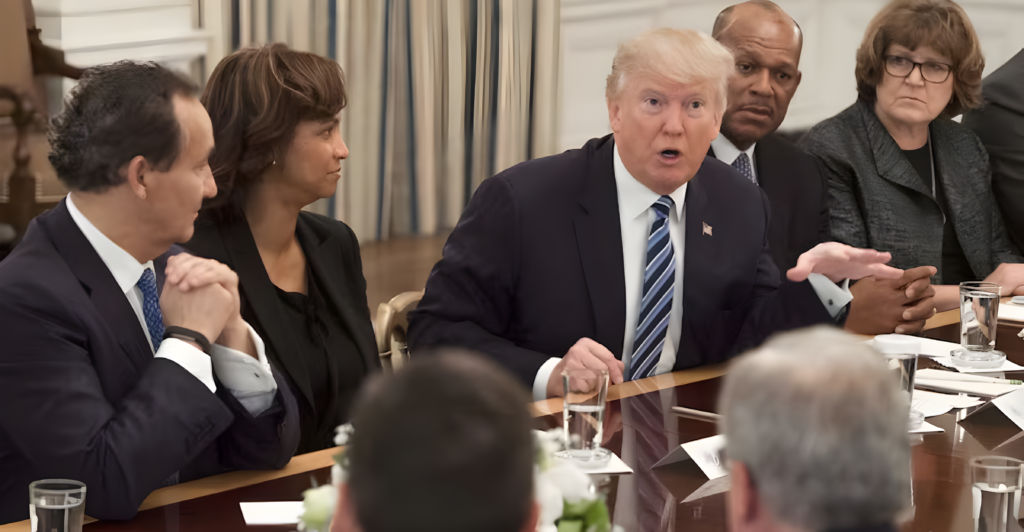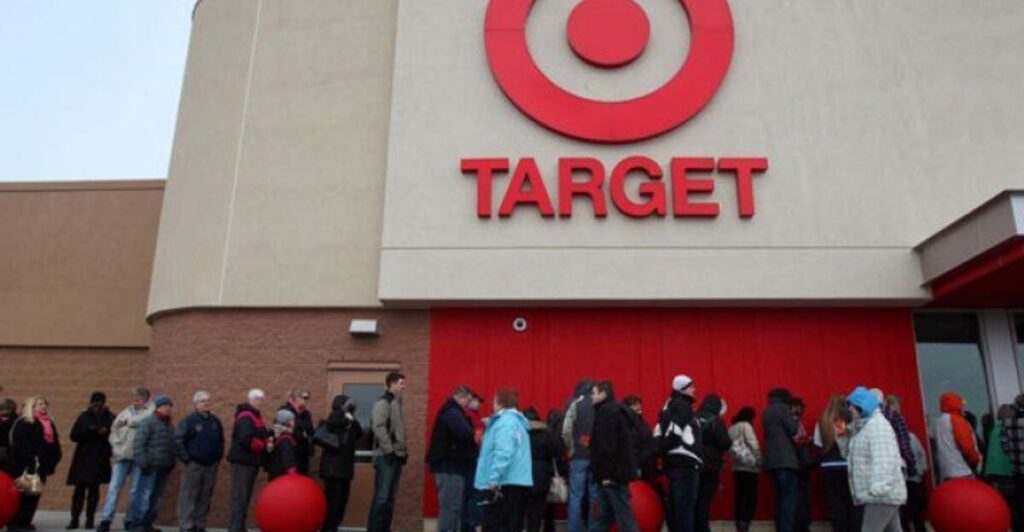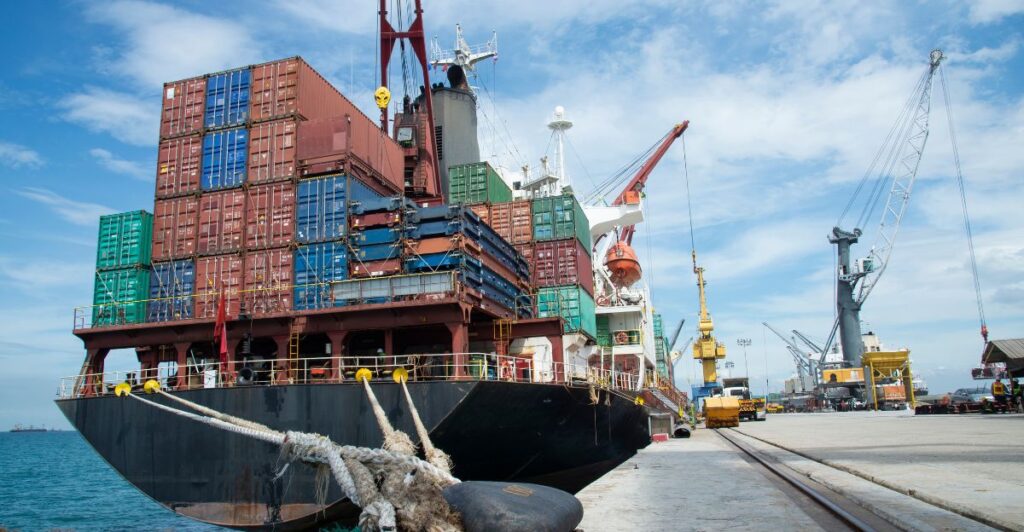
The CEOs of Walmart, Target, and Home Depot recently met with President Trump at the White House to express their deep concerns about the administration’s proposed tariff policies. They warned that these tariffs could result in higher consumer prices, disruption of retail supply chains, and product shortages on store shelves.
This meeting highlighted the potential economic effect tariffs could have on the $8.5 trillion retail industry and the 132 million households it serves. The retail leaders urged the government to reconsider tariffs to prevent empty shelves and inflated costs that would deeply affect everyday Americans.
CEOs’ Concerns on Tariffs and Consumer Prices

Walmart’s Doug McMillon, Target’s Brian Cornell, and Home Depot’s Ted Decker emphasized that tariffs were effectively a tax on U.S. importers, which in turn would increase prices for consumers. They explained that tariffs on products like clothing, toys, furniture, and household goods would directly result in higher prices for American consumers.
Retailers rely heavily on imported goods for variety and affordability, and the tariffs can potentially threaten this balance. The National Retail Federation (NRF) believes that tariffs could reduce Americans’ spending power by up to $78 billion annually across key product categories, excluding food and beverages.
Impacts on Retail Supply Chains and Inventory

Retail experts warn that tariffs will strain supply chains, causing a sharp decline in product imports starting in May and continuing throughout the year. The NRF predicts a total net volume reduction of 15% or more by year’s end, which could lead to selective shortages on shelves.
Retailers, who are still recovering from pandemic-related supply chain disruptions, face challenges with inventory control. They have been stockpiling goods to prepare for tariffs, but now hold excess inventory of less popular items while lacking sufficient stock of high-demand products, worsening the availability problem.
Empty Shelves and the Average American

In addition to skyrocketing prices, empty shelves are quickly becoming a common sight in US states, turning each daily shopping trip into a battle for American families. Essential items like baby formula, canned goods, regular groceries, and fresh produce are routinely unavailable, forcing consumers to travel long distances or settle for less.
This scarcity disrupts the stability and ease that Americans have long taken for granted. The shortage of common goods not only frustrates shoppers but also threatens food security and quality of life, especially in vulnerable communities where access to alternatives is limited.
Jobs and the Economy

Tariffs also threaten American employment, particularly in the manufacturing and retail sectors. Companies report higher production costs due to expensive imported materials, squeezing profit margins, and forcing some to pause hiring or cancel contracts.
For example, clothing manufacturers reported immense losses due to restrictions on materials imported from China, with thousands of people losing their jobs and reduced employment opportunities. Although some sectors increased hiring in anticipation of tariffs, many experts predict a decline as the economic burden grows, affecting workers across the supply chain.
Retailers’ Varied Exposure to Tariffs

The impact of tariffs varies among retailers depending on where they source their products. Walmart already sources about 33% of its products from abroad in countries such as China and Mexico, making it somewhat less vulnerable.
Target imports about 50% of its goods, including a substantial amount from China, so its exposure has risen. Home Depot sources half of its goods from North America, but it is unclear how much of that comes from Canada.
This variation affects how each retailer will manage price increases and supply challenges, influencing the range and cost of products available to consumers.
Consumer Sentiment and Political Pressure

A recent survey shows that 76% of American voters believe prices will go up if tariffs are imposed, and many want the government to prioritize lowering inflation and grocery costs rather than pursuing trade policies.
High prices disproportionately hit low-income households, working families, the elderly, and small businesses hardest, worsening economic inequality.
This public sentiment would likely put pressure on policymakers to ease tariffs, balancing trade goals with the immediate needs of consumers and the economy.
Broader Economic Risks of Tariffs

Tariffs threaten to disrupt the foundational elements of the American economy by raising prices, resulting in product shortages, and reducing consumer spending power. These impacts could slow economic growth, increase inflation, and undermine confidence in retail markets.
Small businesses and farmers, who depend on affordable inputs and stable supply chains, could be hit with higher costs and uncertainty. The cumulative impact, however, could reverberate throughout the economy, affecting everything from jobs to household budgets.
Retailers’ Call for Flexibility and Dialogue

Following the meeting, Walmart, Target, and Home Depot described the discussion with President Trump as productive and constructive. The administration’s 90-day pause on reciprocal tariffs is seen as an opportunity for dialogue and flexibility.
Retailers hope to work with the government to find trade solutions that can protect consumers and supply chains without disrupting the U.S. economy. This collaborative approach aims to avoid the worst-case scenarios of empty shelves and job losses while addressing trade imbalances.
The Stakes for America

The warnings from the top retail CEOs highlight the real risk that tariffs pose to everyday Americans: empty shelves, higher prices, and fewer jobs. These consequences threaten not only consumer convenience but also economic security and social stability.
As the country navigates complex trade policy decisions, balancing protectionist measures with the needs of consumers and workers remains crucial. The outcome will shape the retail landscape and the broader economy for years to come, affecting millions of American families and communities.
Discover more trending stories and Follow us to keep inspiration flowing to your feed!

Craving more home and lifestyle inspiration? Hit Follow to keep the creativity flowing, and let us know your thoughts in the comments below!
